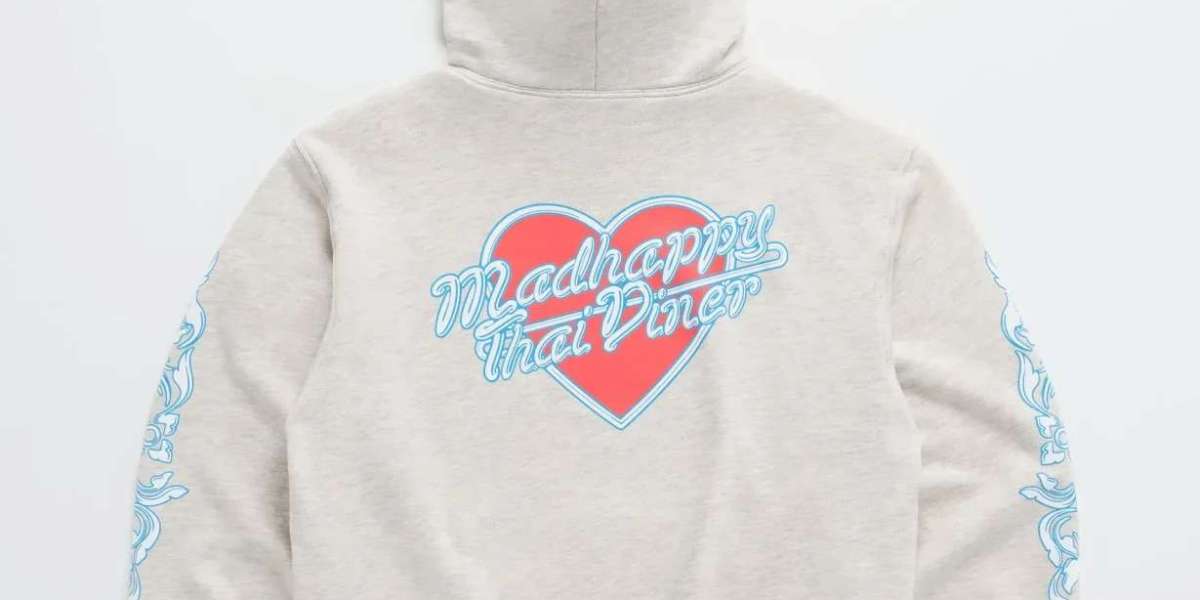The Birth of Madhappy: More Than Just a Clothing Label
In a world saturated with fast fashion and fleeting trends Madhappy emerged not just as a streetwear brand but as a voice for an entire generation grappling with mental health, identity, and optimism. Launched in 2017 by four co-founders—Peiman Raf, Noah Raf, Mason Spector, and Joshua Sitt—Madhappy was more than an entrepreneurial pursuit. It was a personal mission. The brand was built around a single, powerful message: It’s okay to not be okay.
This wasn’t a tagline dreamed up by a marketing team. It came from lived experiences. The founders, especially Mason Spector and Josh Sitt, had wrestled with anxiety and depression firsthand. Their vision was to normalize these conversations and design clothing that not only looked good but made people feel understood. At its core, Madhappy is a cultural movement masked as fashion—where the fabrics may be cotton, but the threads are laced with hope, vulnerability, and purpose.
The Philosophy Behind the Name: A Duality We All Live With
The name “Madhappy” itself is paradoxical. Two opposing emotions—madness and happiness—combined to reflect the duality of the human condition. It’s an honest portrayal of modern life, where good days and bad coexist. Rather than selling a polished illusion of constant bliss, Madhappy embraces the full emotional spectrum.
This honest branding has resonated with a generation that values authenticity over perfection, especially in the age of social media. Young people are increasingly aware that curated feeds often hide real struggles. Madhappy tapped into this cultural undercurrent by offering a safe space—both digitally and in real life—where people could share, reflect, and connect.
Aesthetic With Intention: Minimal, Colorful, and Mood-Lifting
From a design standpoint, Madhappy’s collections strike a careful balance between contemporary minimalism and vibrant expression. The brand’s hoodies, sweatpants, T-shirts, and accessories often feature pastel color palettes, bold typography, and uplifting slogans like “Local Optimist” or “Mental Health Is Health.” The silhouettes are relaxed, rooted in classic streetwear, but what truly sets them apart is the messaging.
Each collection is created with intention. Whether it's a capsule inspired by nature’s healing power or a city-specific drop celebrating local communities, every piece serves a narrative. Madhappy isn’t interested in cluttered designs or overdone logos. Instead, they focus on designing clothes that spark dialogue—about optimism, mental health, and the importance of checking in with yourself and others.
The Local Optimist Universe: A Community Within a Brand
A major component of Madhappy’s impact lies in what they call the “Local Optimist” community. This isn’t just a catchy phrase; it’s a sub-brand, a philosophy, and a lifestyle. The Local Optimist platform acts as a mental health resource hub that includes articles, guided reflections, and tools curated by professionals.
Madhappy understands that clothing alone can’t address the complexities of mental health. That’s why they invest in content that empowers people to explore their emotional well-being. The brand has even partnered with mental health organizations like The Jed Foundation and Project Healthy Minds, donating portions of proceeds and using its platform to elevate meaningful causes.
In this sense, Madhappy redefines what a fashion brand can be. It becomes a bridge—connecting self-expression with self-care, and aesthetic value with emotional vulnerability.
Collaborations That Matter: Merging Culture With Cause
Over the years Mad Happy has collaborated with a curated list of partners—ranging from iconic institutions like Columbia Sportswear and LVMH, to the NBA and UCLA Health. These aren’t your typical “hype drops.” Each collaboration is designed with a larger mission in mind.
For instance, their 2022 collaboration with Columbia fused fashion and function, offering performance gear that encouraged people to get outside and reconnect with nature, an underrated aspect of mental wellness. Their capsule with the NBA wasn’t just about courtside style—it included content centered on emotional resilience and community building in sports.
What distinguishes these collaborations is that Madhappy doesn’t just slap logos on products. They embed meaning into every piece, ensuring that their partners align with their mental health mission. This approach not only strengthens the brand’s authenticity but also broadens its reach across industries, making mental health a mainstream conversation.
Pop-Ups With Purpose: Retail Therapy, Reimagined
In an age of online shopping, Madhappy has found incredible success with its purpose-driven pop-up shops. These aren’t your average retail experiences. Each pop-up is designed as a temporary sanctuary—immersive, thoughtful, and emotionally uplifting. From New York to Los Angeles to Aspen, these spaces often feature mental health workshops, journaling corners, and even free therapy sessions.
The goal? To turn a simple shopping trip into a moment of reflection and connection. For Madhappy, the physical store isn’t just a point of sale—it’s a platform for experiential empathy. Shoppers walk away with more than a hoodie; they leave with a sense of belonging.
Mental Health at the Forefront: Not a Gimmick, But a Foundation
Let’s be clear—Madhappy’s focus on mental health is not a trend. It’s not a buzzword they’ve co-opted for social clout. It is the core of their brand identity. They have made consistent efforts to back up their message with real action. From launching the Madhappy Foundation—a nonprofit dedicated to improving mental health access—to hosting mental wellness panels and donating significant revenue, the brand is walking the talk.
In a capitalist landscape where cause-washing is common, Madhappy’s transparency and consistency are refreshing. They publish annual reports on their philanthropic efforts, partner with credible mental health organizations, and create content that informs rather than sells. They’ve transformed mental health from a taboo into a brand pillar, setting a powerful example for others in the industry.
Celebrity Backing Without the Noise
Unlike many brands that chase celebrities for validation, Madhappy has attracted organic support from artists, athletes, and influencers who resonate with its mission. Celebs like Gigi Hadid, LeBron James, Kid Cudi, and Jaden Smith have been spotted wearing the brand, but what’s more impressive is how little Madhappy talks about it. They’ve let the message speak louder than the fame.
This low-key, mission-driven approach has strengthened their credibility. By avoiding over-commercialization and focusing on mental health advocacy, Madhappy has won the loyalty of both consumers and tastemakers alike.
A Future Built on Values, Not Virality
Looking ahead, Madhappy isn’t trying to be the next Supreme or Off-White. They’re not chasing hype cycles or TikTok virality. Their sights are set on longevity through meaning. As the brand expands globally and deepens its philanthropic efforts, it remains grounded in the same ethos that birthed it—creating optimistic conversations through thoughtful clothing.
Their long-term strategy includes building out the Madhappy Foundation, creating educational content, increasing access to mental health services, and continuing to use fashion as a platform for healing. The brand’s vision is nothing short of revolutionary: to become the first fashion label that measures success in lives impacted, not just revenue earned.
The Madhappy Impact: Redefining What Fashion Can Be
In many ways Madhappy Hoodie has redefined the function of a clothing brand. It isn’t just about fabric and fit; it’s about fostering emotional connection, spreading awareness, and uplifting communities. In a world hungry for purpose, Madhappy has shown that fashion can be both stylish and socially responsible.
Their story is a testament to the power of vulnerability. It reminds us that optimism isn’t naïve—it’s brave. And when paired with action, it can transform industries. Madhappy may have started with a hoodie, but it’s grown into something much greater: a symbol of hope for an anxious generation, and a blueprint for what fashion can accomplish when it has heart.







